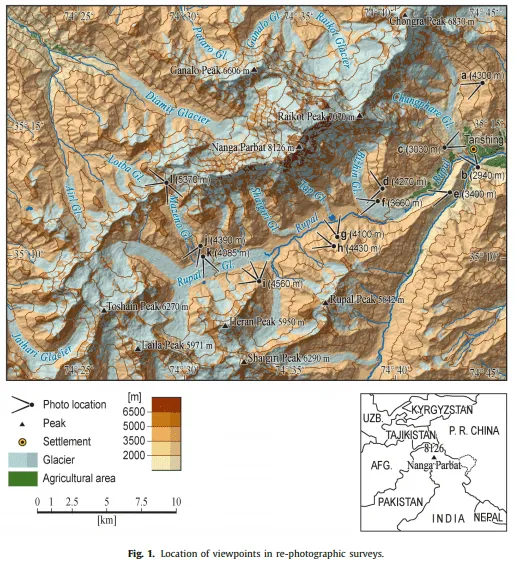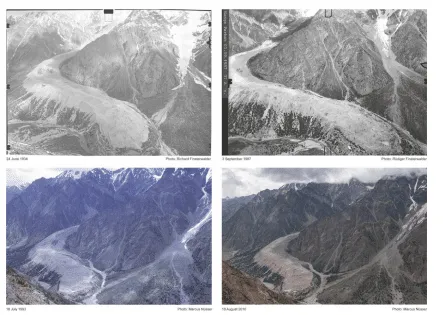Ground Report | New Delhi: Snow, glaciers disappeared; The continuous shrinking of Himalayan glaciers in South Asia is a matter of worldwide concern. Due to their hydrological importance, the Upper Indus Basin (UIB) glaciers deserve special attention as they play an important role in the supply of freshwater to the mountain valleys and the surrounding lowlands.
A study published in the journal Science of the Total Environment on how the glaciers are changing, especially on the glaciers of Nanga Parbat located in the Himalayas.
The glaciers of Nanga Parbat are one of the highest mountains in the world. Which has been slowly, gradually shrinking since the 1930s. This loss in the surface area has been traced through a long-term study by researchers at the South Asia Institute at Heidelberg University. Geographers combine historical photographs, surveys, and topographic maps with current data to show changes in glacial mass in the northwestern Himalayas after the mid-1800s.
ALSO READ: MAHATMA AYYANKALI DALIT REFORMIST, WHO FACED HUMILIATION FROM UPPER CAST IN HIS CHILDHOOD

It is very difficult to study glaciers due to the lack of historical data, the absence of long-term data prior to the availability of satellite data in the Himalayan region says Dr. Marcus Nusser in his study.
The first research expedition was done during 1856. The documents include sketch maps and drawings made during this research mission. Based on this historical data, the Heidelberg researchers reconstructed glacier changes along the southern edge of Nanga Parbat.
In addition, there are many photographs and topographic maps taken during climbing and scientific expeditions since 1934. Some of these historical photographs were taken in the 1990s and 2010s for the purpose of comparison. The database is supplemented by satellite images from the 1960s. It was used by Prof. Multimedia was used by Nusser and his team to create temporal analysis and measure changes in glaciers.
ALSO READ: WORLD OCEAN DAY 2021: IMPACT OF HUMAN ACTION ON OCEAN
The glaciers of Nanga Parbat are mainly formed by snow and avalanches, their rate of retreat is very low compared to other Himalayan regions. The one exception to this is the predominantly ice-covered Rupal Glacier, which has a very high rate of retreat. Supporter. Overall, more studies are needed to better understand the specific impact of avalanche activity on glacier dynamics in these high mountain regions, Nusser said.

The researchers specifically want to examine fluctuations in glaciers, changes in ice volume, and the growth of debris-covered areas on glacier surfaces. Their analysis included 63 glaciers already recorded in 1934. Pro. Nusar said that our analyzes have shown that the area covered by snow has decreased by about 7 percent and 3 glaciers have completely disappeared. In addition, we have seen a significant increase in debris. The study is published in the journal Science of the Total Environment.
The geographical location of the Nanga ranges to the northwest of the rounded part of the Himalayas near the Karakoram range may play an important role in reducing glacier retreat by comparison. In a phenomenon known as the Karakoram anomaly, no major glacier retreat has been identified as a result of climate change in this mountain range, it is different from everywhere else in the world.
You can connect with Ground Report on Facebook, Twitter, and Whatsapp, and mail us at GReport2018@gmail.com to send us your suggestions and writeups










